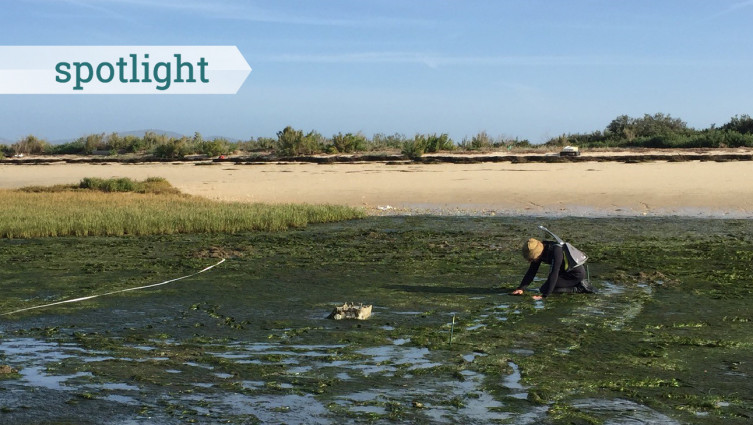Plastic accumulation in seagrass meadows and saltmarshes
The marine plastic problem
Plastics have been accumulating in the environment and ecosystems due to the time it takes for them to deteriorate. Microplastics are the most abundant debris in the marine ecosystem in the most varied shapes such as fragments, foams, pellets and fibres. Although there are several studies about plastic pollution in marine ecosystems, only recent research has tested the capacity of coastal vegetated habitats to accumulate plastics, acting as a sink for this type of pollutant.
Further research of a Master's thesis
This study on the accumulation of macro and microplastics in coastal vegetated habitats is part of a master's thesis conducted at CCMAR, between 2018 and 2019, by Lorenzo Cozzolino, a student from the University of the Algarve. The thesis was supervised by our researchers Katy Nicastro and Carmen B. de los Santos in collaboration with Gerardo Zardi, from Rhodes University.
Macro and microplastics found in four different types of coastal vegetated habitats
We investigated the role of marine vegetated coastal habitats as sinks for macro (≥5 mm) and microplastic (<5 mm) in the Ria Formosa. Four different habitat types were studied: intertidal saltmarsh (Sporobolus maritimus), intertidal seagrass meadows (Zostera noltei), subtidal seagrass meadows (Cymodocea nodosa and Zostera marina) and subtidal canopy-forming rhizophytic macroalgae (Caulerpa prolifera).
Our results suggest that coastal vegetated habitats present high variability in accumulating plastic and that the combination of tidal position, canopy properties, and plastic size may explain their plastic trapping capacity. For instance, saltmarshes may be efficient in trapping macroplastics but not microplastics on their canopies, while subtidal seagrasses accumulated a low number of macroplastics but a high number of microplastics attached to their canopies.
Study warns about the inclusion of coastal habitats in the assessments of plastic debris accumulation
We demonstrated that macro and microplastics accumulate in coastal vegetated habitats, such as seagrass meadows and saltmarshes. Since these ecosystems are important nursery areas and support high biodiversity, including protected and commercial species, they should be habitats to include in assessments of plastic debris accumulation and impacts in coastal areas.
You can read the full article HERE.




